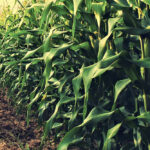1.
News — page 321

Reducing methane can benefit livestock
A combination of strategies is focus of new research
Reducing methane emissions from cattle likely depends on more than one strategy, a researcher told the Animal Nutrition Conference of Canada. Dr. Cecile Martin from the Université Clermont Auvergne in France said feeding strategies and phenotypic selection both have roles to play. Why it matters: Strategies have emerged over the years to combat methane emissions, […] Read more

Viewing your farm debt differently
FCC veteran John Geurtjens discusses how attitudes to debt and business opportunities have changed on the farm
Decades of experience with Farm Credit Canada (FCC) showed John Geurtjens, former vice-president of operations in Ontario, how adaptable the province’s agriculture sector really is. And while issues may change, opportunities remain. In modern times, where debt levels and prices diverge from interest rates, those opportunities start with a general reconsideration of how farms look […] Read more

Home Grown campaign educates citizens on farmland loss
OFA initiative seeks agriculture impact assessments as part of urban planning
The Ontario Federation of Agriculture (OFA) is sowing seeds of advocacy through its recently launched Home Grown campaign. It wants to educate Ontarians on how development threatens finite farmland resources and emphasize that agriculture is under pressure to provide affordable food options for Canadians. Why it matters: Urban sprawl is threatening the viability and sustainability […] Read more
Editorial: Will agriculture seize the moment?
There’s growing interest from outside the traditional agriculture world in what’s happening on the farm and the arrival of new ideas and people will change the sector in ways we can’t yet predict. I continue to hear stories from people about academics with no connection to agriculture becoming involved in agriculture research. Consultants say they […] Read more

AALP deadline extended to June 30
The Rural Ontario Institute (ROI) has decided to extend recruitment for the Advanced Agricultural Leadership Program (AALP) Class 19 until June 30th 2021. The selected participants will start their start their curriculum with the first seminar in November 2021. During the 18-month executive program, 30 individuals will embark on a personal leadership journey to realize […] Read more

Anhydrous use dwindles in Ontario
Suppliers are turning to more popular, less regulated nitrogen options
Safety concerns, ever-tighter regulations and good alternatives continue to reduce the availability of anhydrous fertilizer in Ontario. But while urea and urea ammonium nitrate (UAN) now dominate, some growers and input suppliers still see enough value in anhydrous to maintain a degree of availability. Why it matters: Anhydrous, the comparatively cost-effective option for nitrogen fertility, […] Read more

How hot can prices get?
High prices can skew cost of production, making farmers vulnerable
Commodity prices have been strong for the past eight months. It’s been a boon for growers, though prolonged periods of decent returns can skew cost of production. Canadian growers could be open to significant financial hardship if they see sustained price reductions or major production challenges like those experienced in the 1970s and 1980s, after […] Read more
Corn N status and forage crop bugs
OMAFRA Field Crop Report for June 9
Corn Nitrogen Status Nitrogen mineralization is favoured by warm soil temperatures with adequate soil moisture and aeration. Excess moisture can slow mineralization or increase the potential for losses through denitrification (especially under warm conditions) or leaching. Spring of 2021 progressed similar to 2020. Sunshine and little rainfall resulted in great soil conditions through April and […] Read more

Bioenterprise builds a national agri-food innovation network
The Guelph-based organization is partnering with organizations with an interest in agriculture and food
A little over a year ago, a Guelph-based agri-food innovation accelerator set out on a somewhat ambitious quest: to build a national agriculture innovation network. Bioenterprise had a long-standing history in Ontario of helping start-ups and emerging companies in the agri-food sector along their growth paths, but there was no one-stop-shop at the national level […] Read more
Fallis promoted to VP of Canarm ag business
Canarm recently announced the promotion of Paul Fallis to vice-president of its Canadian Ag Business unit. Fallis’s long history of leadership with Canarm AgSystems, combined with his market knowledge and focus on customer service make him the perfect choice for this role, said Jim Cooper, company president and chief operating officer in a news release. […] Read more


